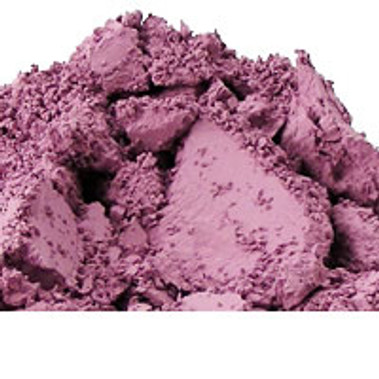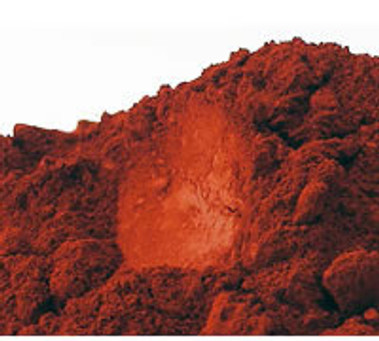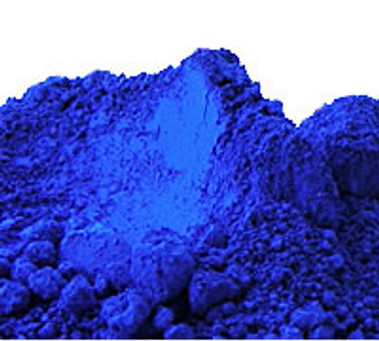Zinc Oxide (NON-Nano)
(Please note this particular zinc oxide is non-nano which is what most people are looking for when it comes to skincare applications among other things.)
Description
“Philosopher’s Wool”, “Chinese White”, and “Flowers of Zinc,” – these are some of the names given to a compound that’s uses range from rubber to ceramics; concrete to medicine; cigarettes to food; paints to electronics and everything in between. Its official name is Zinc Oxide, and its uses are expanding as fast as technology is advancing. Many of its uses take advantage of its ability to conduct heat, antibacterial and UV-protection properties as well as its ability to act as a binding agent when mixed with other substances.
Zinc Oxide can occur naturally as the mineral zincite. This rare crystal has been found the Franklin and Sterling Hill Mines in New Jersey. These crystals can also be formed artificially and are a natural by-product of smelting zinc. Both natural and synthetic crystals can be colored dark red, orange, yellow and green. However to keep up with a nearly one million tons per year industrial demand for zinc oxide, most is created artificially by several different processes:
The American process involves heating zinc composites (such as the above mentioned by-products of zinc smelting) with carbon in order to create zinc vapor. This vapor then reacts with the oxygen in the air to produce zinc oxide that, as it cools, can be collected. The more common method is the French process. This similar process utilizes metallic zinc heated inside a graphite container that can withstand extreme temperatures.
Specialized laboratory processes can synthesis zinc oxide for various niche applications (such as creating nanowire, thin film, or mass production). The white powdered form can be created by running an electric current through a solution of sodium bicarbonate with a zinc anode inside. The resulting zinc hydroxide gas produced is heated and decomposes into zinc oxide. Extremely pure forms of zinc oxide have exciting applications in nanotechnology. Compatible with well-developed silicon technologies zinc oxide nanowires have potential use in computing, solar energy and beyond.
A long but vague history
Thought to be used to treat skin conditions for thousands of years, without modern classifications and terminology it is impossible to know for certain what our ancestors were using. Our first known use of the product was in paints and pigments in 1834. Because zinc oxide doesn’t turn black in air contaminated with sulfur, it makes an excellent bright white permanent paint. It is also non-toxic and more economical than other available technologies at the time. One drawback was that zinc oxide itself becomes brittle as it dries. Art work from the late 1890’s and early 1900’s developed cracks over time.
Uses of Zinc Oxide
Zinc Oxide can be added to creams and lotions to add sun protection. This makes it perfect for the “do-it-yourselfer” who is concerned about the harmful effects of ultraviolet radiation on the skin. It is the best broad spectrum UVA and UVB reflector approved for use as a sunscreen by the Food and Drug Administration. This is because zinc oxide does not absorb into the skin when applied with a lotion. Instead it sits on top of the skin and reflects both UVA and UVB light. Because it isn’t absorbed into the skin, it doesn’t irritate or cause allergic reactions.
Roughly half of the world’s use of Zinc Oxide is done in the rubber industry. It is an important ingredient in turning sticky rubber into more durable and form with an ability to resist the growth of mold and fungi as well as impart a resistance to ultra violet light. It is also used in the ceramic industry to create various finishes. Small amounts added to a finish creates a glossy shiny surface. While larger amounts create a matte and crystalline finish. Its high heat capacity and temperature stability combined with its low expansion make it perfectly suited for ceramics.
One of the most significant advances in concrete has found zinc oxide quite beneficial. Self-compacting concrete is a relatively new form of concrete that is able to be poured inside formwork, around reinforcements and through narrow passageways. Self-compacting concrete is then able to consolidate by itself without vibration, simply by its own weight. A study, “Sythesis of Zinc Oxide Nanoparticles and Their Effect on the Compressive Strength and Setting Time of Self-Compacted Concrete Paste as Cementitious Composites,” by Mohammad Reza Arefi and Saeed Rezaei-Zarchi found that the addition of zinc oxide nanoparticles at different concentrations improved “the flexural strength of self-compacting concrete.” This addition also reduced the number of harmful pores inside the concrete thus increasing the mechanical strength.
Found in calamine lotion, baby powder, anti-dandruff shampoos and diaper rash ointment, zinc oxide has many medical uses. The basic antibacterial and deodorizing properties also result in it being used as an additive in cotton fabrics, rubber and food packaging. These characteristic isn’t exclusive to zinc oxide, but can also be found in silver. Both have fine particles with a relatively large surface area, but silver’s use is uneconomical.
Added to charcoal, it used in cigarette filters to reduce the amount of harmful chemicals from tobacco smoke. Added to food products (like breakfast cereals), it provides a good source of zinc. As a pigment in paints it has resulted in a color called Chinese white. It also is a primary ingredient in many mineral makeup products.
It is also long been used to add a corrosive resistant finish on metals, especially useful on iron which reacts with organic coatings resulting in a loss of adhesion. Zinc Oxide coatings are used on energy-saving and heat-protecting windows. The coating lets visible light through while reflecting infrared radiation. Applied on the inside of a window helps keep heat inside a room, while on the outside help keeps the heat out.
Many have expressed concern that zinc oxide may be absorbed into the skin, however scientific studies have found no evidence that any ill-effects of direct contact with skin. Try adding zinc oxide into your repertoire of homemade ingredients. From adding SPF to your lotions and lip balms, to helping preventing dandruff in your shampoos, zinc oxide might become your best friend.
22 Reviews
-
Diy sunscreen
I followed the DIY sunscreen recipe that was sent out by email. I bought this zinc and the amber plastic bottles to make the sunscreen.
It does leave a white cast but if you keep rubbing in really well then it isn't so bad. The only thing I'm disappointed with is that the amber bottles were recommended I bought and used but the sunscreen is so thick it doesn't come out. I poured it in just fine but it isn't fluid enough to come out. Not sure how to get out now without warming up bottle or cutting it open. I should have used jars. Didn't know it was that thick. -
Great product and also best price
I just thinking to find some daily lotion who have a percentage of spf like a face cream I cannot find it and I decided to give a checked online I find that zinc oxide from bulk and decided to give a try the same day I received my package I mixed 2 oz to my 18 oz lotion when I try it on my skin I was disappointed because my skin was really white I said oh Lord I lost my money that zinc oxide and lost my lotion too but even that I didn’t put them in trash 2 days after I gave a try again I was surprise how it was great no more white skin,my skin like I don’t add any zinc oxide in my lotion thank you bulk I will buy again.
-
Best value for zinc oxide powder
The highest quality non-nano zinc oxide for the money I have found. I mix it in the organic lotion base at 20% by weight to make sunscreen.
-
Excellent for homemade sunscreen
I researched making sunscreen for a long time before settling on a recipe which sounded good and incorporated the ingredients I have on hand for my soaping. Zinc oxide was the one (major) ingredient I didn't have so since I buy most of my supplies at BA I finally ordered it. Excellent! It easily mixes into my heated oils and the sunscreen is easy to apply and super-smooth with not a trace of the "whitening" which many report as an unwanted surprise. I'm extremely happy this first time around and can't think of anything to change to make it better!
-
Absolutely Wonderful
Made and used sun protection with this item, the results are amazing. Up to 4 hours in the sun and pool without needing to reapply! I am extremely impressed and thrilled with the results.
-
I use this in my homemade diaper cream
And also a little bit in my eczema lotion. It works well.
-
Great product at a great price!
The quality and price of this zinc oxide is outstanding. Not only did I get the best pricing for it but Bulk Apothecary ships your orders out to you extremely fast. I am always amazed at how quickly I receive my order. Thank you Bulk Apothecary! Keep up the great customer service!
-
Pure and inexpensive!
I started making my own mineral foundation 3 years ago and have loved it! Unfortunately, I'd ordered my ingredients from another company & discovered their $22lb of zinc oxide contained lead & cadmium (neither ingredient was listed on the item description on the website.) Not only does Bulk Apothecary carry 100% zinc oxide powder, it's 1/3 of the price I'd paid elsewhere! My makeup looks & performs perfectly. The shipping, however, is higher than most other online retailers. I paid $15.29 on 2lb of product (titanium dioxide & zinc oxide) & $11.85 on standard shipping.)
-
great product
great product with a great price














